15 Types of Pillows to Help You Sleep in Comfort & Luxury
Author: Rick Worst | Editor: Omar Alonso
Review & Research: Jen Worst & Chris Miller

It’s not just a comfortable mattress that’s important—the different types of pillows you use can make all the difference between a well-rested night and a sore morning.
Considering that we spend at least 8 hours (or one-third of our lives) with our head on one in more or less the same position, it’s important to find a pillow that gives you the right kind of support and comfort through the night, so you don’t wake up with a horrible crick in the neck.
15 Types of Pillows
Finding the right pillow can get a little overwhelming—what sets the different types apart? Here’s a handy little pillow guide that’s sure to make picking out a pillow easier. Since pillows rest against them, you may be interested in learning about the types of headboards next.
Feather Pillows
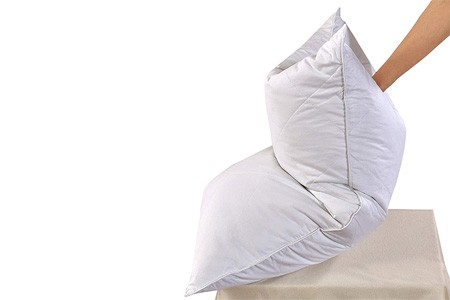
The classic pillow stuffing, feather pillows were the only pillow option till the late twentieth century. Take note that feather and down pillows are different, and we'll explain the difference momentaryl.
Stuffed with flat feathers, from the back or wings of ducks and/or geese, these pillows, though often used synonymously, are quite different from down pillows —the feathers in the former come from upper layers and the latter from the protective layer underneath.
Feather pillows are all kinds of soft and fluffy, retaining their shape and firmness longer than down pillows—they’re also more expensive. They will feel more firm when compressed than a down pillow will.
They’re a great mix of softness, comfort, support and conformability, thanks to high-quality feathers that are highly curled and small in size, but as strong as carbon fiber.
In today’s day and age, though, you may want to steer clear of a pillow (or any object, actually), that may potentially be a source of animal abuse.
These pillows also require constant fluffing, as they clump together and may cause allergies in certain folks. The quills can also poke through the cover—severely uncomfortable, needless to say.
Down Pillows
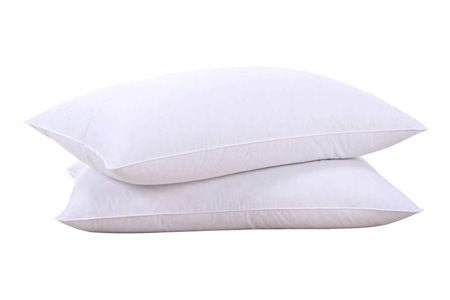
Down pillows make for the gentlest, softest pillows—understandably, they come from the fluffy “down” undercoat of the bird. Think feathers without the hard quills in the center.
Down pillow styles are quite the symbol of luxury. They’re lightweight, cushiony and also naturally hypoallergenic, except if you’re allergic to geese and ducks.
Two very popular types of high-quality down pillow are the European white and Hungarian goose down pillows, with a fill power over 600 (the fill power is the amount of down that can be filled per cubic inch of the pillow).
Both pillows are known for being extremely cozy, fluffy and light; however, you won’t find much support in these pillows.
Down types of pillows are great for cold weather—the down has an insulating quality as it traps air to keep the bird warm. This quality is retained even when down is stuffed into pillows.
For this reason, (and the softness, comfort, durability and malleability, of course.), down pillows find many takers, despite the lack of sufficient support. Down types of blankets are extremely popular as well.
To combat the lack of support, some down pillows could also have feathers in them for firming, but these pillows are not as warm or as soft.
The other downside to down pillows is that they’re quite expensive and require regular fluffing.
Down Alternative Pillows
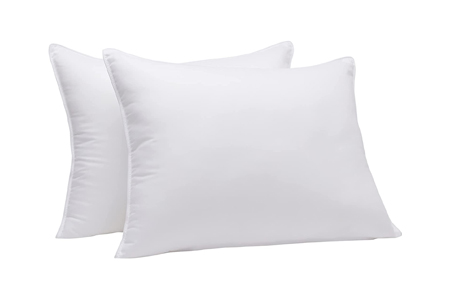
If you’re among those allergic to down, down alternative pillow types are great news. Hypoallergenic microfiber, made from synthetic materials such as polyfill or polyester, are used to stuff these pillows.
While they’re nowhere close to being as plush, durable or as warm as down, down alternative pillows are low maintenance and inexpensive. They also earn brownie points for being completely free of potential animal abuse.
Body Pillows
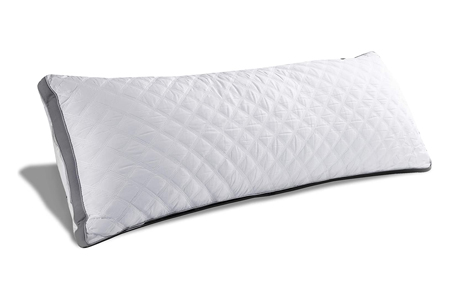
The name says it all—body pillows are as long as the average human body, long and narrow. While they are extremely great to cuddle up to, these pillows, more importantly, are used for pressure relief, comfort and support.
Body pillows have quite an ardent fan base among pregnant women and those who require extra below-head support.
The firmness level can vary, as can the filling (it can be conventional organic or synthetic). These pillows also come in different shapes, though the cylinder is the most common.
While these are great for easing specific pains and aches, these types of pillows are quite space consuming. Your partner may not be too happy with their presence in your bed, either.
Buckwheat Pillows
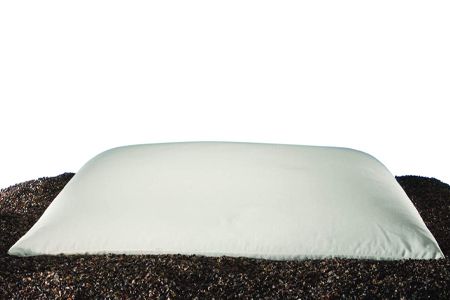
If you’re looking for organic pillows, it doesn’t get more organic than buckwheat in your pillow. Buckwheat pillow styles are similar to microbead pillows when it comes to the texture and feel—and of course, they’re organic, more durable and degrade faster.
These pillows are filled with the hard, protective shells of buckwheat seeds (known as hulls), which are all kinds of hypoallergenic, breathable and easily conformable to the neck and head, helping keep the spine aligned.
Though the rustling of the hull can be quite noisy, the sound grows on you and gets comforting after a while.
Air moves easily between the hulls and the pillow is moldable organic and supportive. Some folks may find these too firm and heavy, though.
Microbead Pillows
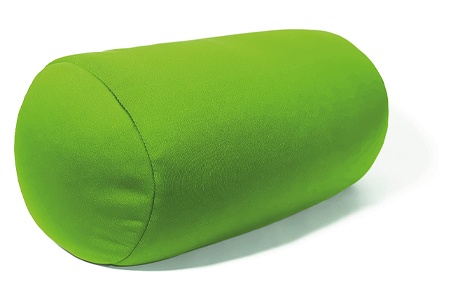
If you’re a regular flier with your own horseshoe neck pillow, you’re probably already familiar with this pillow type. Multiple tiny unexpanded polystyrene beads (EPS) come together to form a squishy, contouring pillow known as a microbead pillow.
These types of pillows provide excellent support, letting you sleep in the most uncomfortable of places, including on your feet. And their unique appearance may fit well if you're using one of the headboard alternatives instead of a traditional one.
Microbeads are also breathable and very cool but one small rip and you have a million beads to clean up. Additionally, these are no friends to the environment, taking about 500 years to degrade.
So, despite the support, moldability and breathability from the excellent airflow, you may want to consider the environmental impact of these pillows before you pick one of them up.
Memory Foam
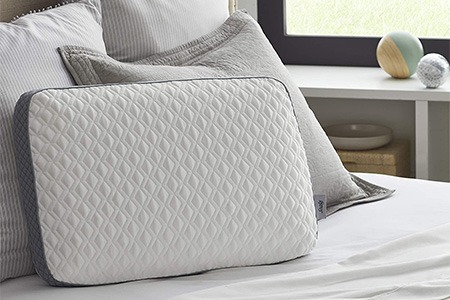
Made of polyurethane and also called visco-elastic, memory foam pillows are extremely popular for their responsiveness and density, allowing the neck and head to be contoured to the pillow while sleeping. The pillow goes back to its original shape the next morning.
Memory foam pillow types come in a range of shapes. They help align the neck and spine, just as memory foam types of mattresses do and are great for a range of health-related issues such as GERD or acid reflux.
Some users find foam pillows to be too firm and solid, with the potential for causing breathability issues when they're first purchased.
This is due to off-gassing or the presence of a strong chemical smell from a wholly chemical construction. However, the filling doesn’t clump as there’s just one solid block of polyurethane.
Shredded Memory Foam Pillows
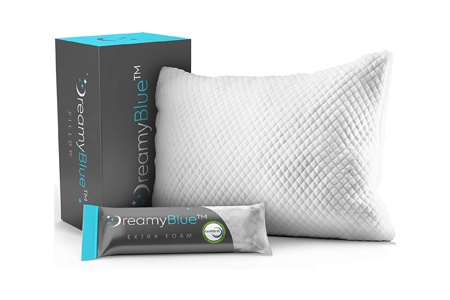
Shredded memory foam pillows mix a variety of foam shreds and use these as pillow stuffing. The shredded pieces are more flexible and adjustable, as opposed to a single, solid block of foam, without taking away any of the responsiveness and bounce of the latter.
The pieces of foam, generally ripped-up polyurethane pieces occasionally blended with polyfill, can also be rearranged to better suit and mold your head and they’re quite firm and supportive, especially for side, back and stomach sleepers.
Foam pillows, in general, are much easier to clean than other types of pillows, but they may flatten over time and warrant fluffing.
They may also be too firm and take too long to dry after a wash. Off-gassing can be a problem here, too.
Gel Pillows
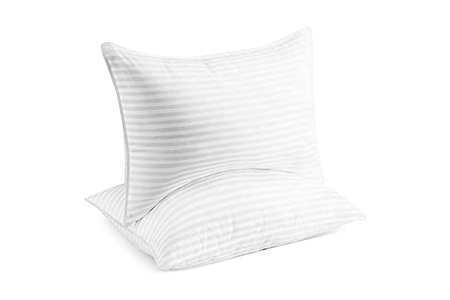
Gel pillows, as the name suggests, come filled with gel, keeping the pillow firm, cool and consistent, without flattening. You get a cooler experience with these pillows due to increased breathability. People even prefer this gel-infusion in their mattresses.
The gel also lends moldability and reshaping ability to the pillow, both of which add extra comfort. The cool sensation also reduces pain, inflammation and pressure.
Most often, gel isn’t used as a standalone material— memory foam pillows come wrapped in a layer of gel, combining the best of both memory foam and gel pillows or the gel is infused or layered with other materials.
These types of pillows are hypoallergenic and don’t require any fluffing or high maintenance. However, it can be quite firm and not be everyone’s cup of tea.
Latex Pillows
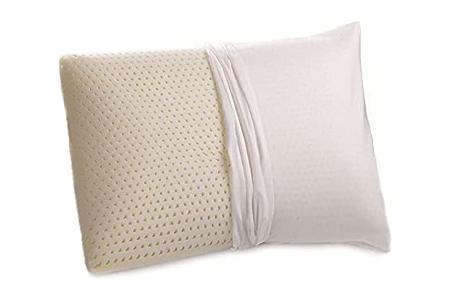
Latex pillows are soft, supportive, breathable, responsive and durable. These pillows are excellent for relieving stress on pressure points and are also extremely clean and hygienic—they’re resistant to mold, dust mites and mildew.
Blocks or shreds of latex are stuffed into the pillow, similar to memory foam pillows. These pillows are also quite eco-friendly, as natural latex is biodegradable.
Ensure that you buy a pillow with 100% natural latex, though and not a polyurethane mix. Natural latex is also more comfortable and durable than synthetic or blended latex.
If you have a latex allergy, though, you’re better off with memory foam pillow types. Many folks also find a lack of breathability in these pillows.
Kapok Fiber Pillows
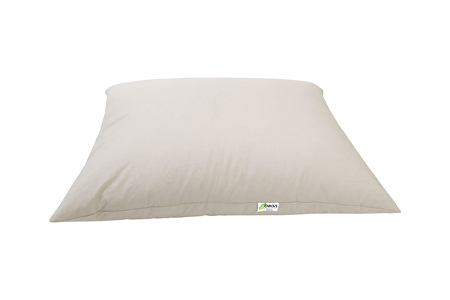
Native to rainforests, kapok is the fluff from the seedpod of the Ceiba tree, extremely similar to down in softness, weight, buoyancy and texture.
As kapok is a plant-based material, pillows made from these are naturally biodegradable and eco-friendly, while also being hypoallergenic and resistant to mildew and mold.
Though you may need to fluff them occasionally, these pillows hold their shape well. However, they can also be quite expensive (harvesting and production are quite laborious) and kapok is naturally extremely flammable.
Wool Pillows
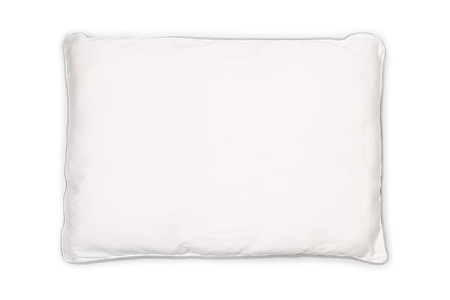
Wool is also used to stuff pillows, not just for its softness and fluffiness, but also for its ability to regulate body temperature, just as it does for its original owners.
Though the wool compresses over time, the support doesn’t get affected. Wool is also eco-friendly, anti-bacterial, anti-microbial, resistant to dust mites and naturally fire retardant.
However, these different types of pillows can be quite high maintenance, requiring special care and dry-cleaning. The wool can be 100% pure or blended, though the former is the softest.
Cotton Pillows
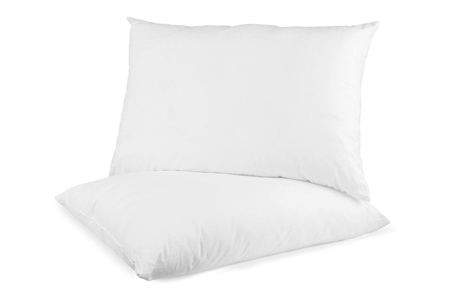
Cotton is generally not viewed as belonging inside a pillow, but rather, outside it. However, cotton-filled pillows, especially organic cotton, are naturally hypoallergenic, absorbent, breathable and firmer than down pillows.
With time, though, they compress and harden, don’t contour to the head and neck and get lumpy or flat. They also absorb moisture and have an increased chance to become discolored. Why do pillows turn yellow, by the way? Find out here if you're curious.
Also, all the sweat and body fluids absorbed over time will lead to quite an unhygienic pillow, if you don’t regularly clean it. These pillows are also prone to attracting mold and dust mites.
Apart from that, cotton is a great material, soft, affordable and only requiring very occasional fluffing.
Water Pillows
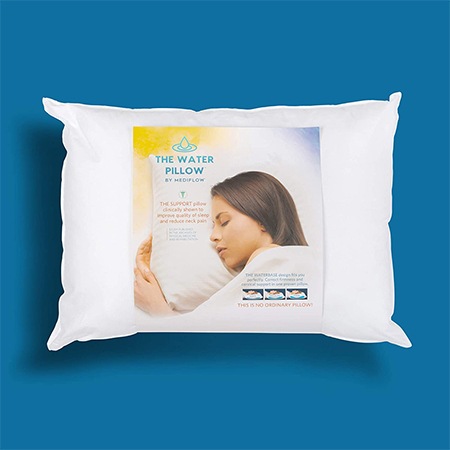
Though uncommon, water pillows are slowly becoming more popular. Their main draw is the adjustability—you just need to change the water level, as you wish.
These pillows aren’t prone to lumping or sagging and are quite consistent. However, water pillows are quite firm and won’t contour your curves.
Needless to say, they don’t require fluffing, are hypoallergenic and stay anchored to one spot, but the risk of leaks and tears is quite real.
Innerspring Pillows
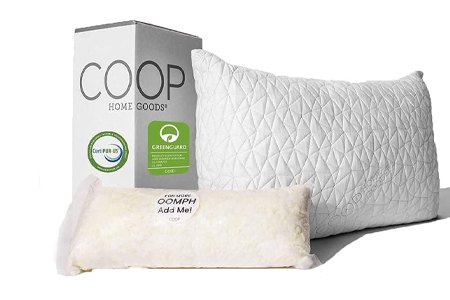
These pillow styles contain an inner layer of steel spring and an outer layer of polyester and memory foam. Innerspring pillows are designed to provide extra neck and head support, just as innerspring mattresses are and they also have good airflow. However, these pillows can cost you a ton.
Types of Pillows for Every Sleeper
As you can see, there’s a range of pillow types out there—and this isn’t even an exhaustive list if you want to start getting into specialty pillows for other purposes beyond basic sleep.
There are cervical pillows, also called orthopedic pillows, that are designed to provide support to the neck and lumbar regions.
There are also pregnancy pillows that are designed to reduce pressure on the lower back while accommodating the baby bump. Sleep apnea pillows accommodate CPAP machines.
With the help of our guide, pick out the right types of pillows for yourself and say hello to nights of deep sleep.



